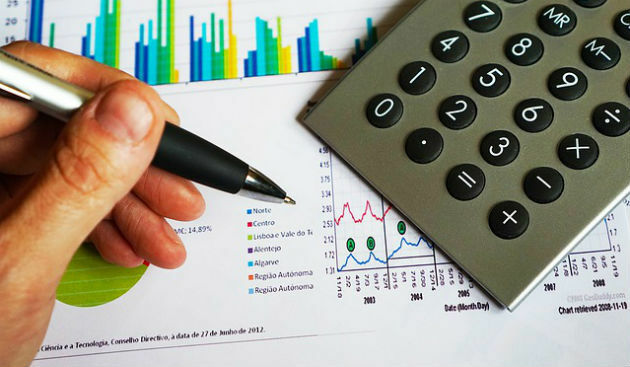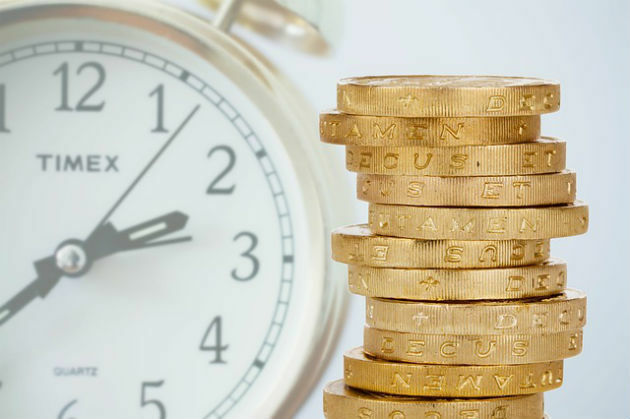THE financial math it is the area of mathematics that studies the equivalence of capital over time, that is, how the value of money behaves over time.
As an applied area of Mathematics, it studies various operations linked to people's daily lives. For this reason, knowing your applications is critical.
As examples of these operations, we can mention financial investments, loans, debt renegotiations, or even simple tasks, such as calculating the discount value on a given product.
Basic Concepts of Financial Mathematics
Capital (C)
Represents the value of money at the current time. This amount can be from an investment, debt or loan.
Interest (J)
They represent the values obtained by the remuneration of a capital. Interest represents, for example, the cost of borrowed money.
It can also be obtained by the return of an investment or by the difference between the spot and forward value in a commercial transaction.
Amount (M)
It corresponds to the future value, that is, it is the capital plus the interest added to the value.
Thus, M = C + J.
Interest Rate (i)
It is the percentage of the cost or remuneration paid for using the money. The interest rate is always associated with a certain term, which can be, for example, a day, a month or a year.
Basic Calculations of Financial Mathematics

Percentage
THE percentage (%) means percent, that is, a certain part of every 100 parts. As it represents a ratio between numbers, it can be written in the form of fraction or how number tenl.
For example:
We often use percentages to indicate increases and discounts. As an example, let's think that a garment that cost 120 reais is, in this period of the year, with a 50% discount.
As we are already familiar with this concept, we know that this number is half the initial value.
So, this outfit at the moment has a final cost of 60 reais. Let's see how to work the percentage:
50% can be written 50/100 (ie 50 per hundred)
Thus, we can conclude that 50% is equivalent to ½ or 0.5, in decimal number. But what does this mean anyway?
Well, the clothing is 50% off and therefore it costs half (½ or 0.5) of its initial value. So half of 120 is 60.
But let's think about another case, where she's 23% off. For that, we have to calculate what is 23/100 of 120 reais. Of course, we can approximate this calculation. But that's not the idea here.
Soon,
We transform the percentage number into a fractional number and multiply it by the total number we want to identify the discount:
23/100. 120/1 - dividing 100 and 120 by 2, we have:
23/50. 60/1 = 1380/50 = 27.6 reais
Therefore, the 23% discount on clothes that cost 120 reais will be 27.6. Thus, the amount you will pay is 92.4 reais.
Now let's think about the concept of a raise rather than a discount. In the example above, we have that the food went up 30%. For this, let's exemplify that the price of beans, which cost 8 reais, increased by 30%.
Here, we have to know how much is 30% of 8 reais. As we did above, let's calculate the percentage and finally add the value to the final price.
30/100. 8/1 - dividing 100 and 8 by 2, we have:
30/50. 4/1 = 120/50 = 2,4
Thus, we can conclude that the beans in this case are costing another 2.40 reais. That is, from 8 reais its value went to 10.40 reais.
See too: how to calculate percentage?
Percent Change
Another concept associated with percentage is that of percentage variation, that is, the variation in percentage rates of increase or decrease.
Example:
At the beginning of the month, the price of a kilo of meat was 25 reais. At the end of the month the meat was sold for 28 reais a kilo.
Thus, we can conclude that there was a percentage variation related to the increase in this product. We can see that the increase was 3 reais. Due to the values we have:
3/25 = 0,12 = 12%
Therefore, we can conclude that the percentage change in the price of meat was 12%.
Read too:
- Ratio and Proportion
- Percentage Exercises
- What is Inflation?
Fees
The calculation of interest can be simple or compound. In the simple capitalization regime, the correction is always made on the value of the initial capital.
In the case of compound interest, the interest rate is always applied on the amount of the previous period. Note that the latter is widely used in commercial and financial transactions.
Simple interest
You simple interest are calculated taking into account a certain period. It is calculated by the formula:
J = C. i. no
Where:
Ç: invested capital
i: interest rate
no: period corresponding to interest
Therefore, the amount of this application will be:
M = C + J
M = C + C. i. no
M = C. (1 + i. n)
Compound interest
The system of compound interest it is called accumulated capitalization, since, at the end of each period, the interest on the initial capital is incorporated.
To calculate the amount in a compound interest compounding, we use the following formula:
Mno = C (1+i)no
Read too:
- Simple and Compound Interest
- Simple and Compound Three Rule
- Simple Interest Exercises
- Compound Interest Exercises
- Math Formulas
Template Exercises
1. (FGV) Suppose a security of R$500.00, whose maturity period ends in 45 days. If the "outside" discount rate is 1% per month, the simple discount amount will be equal to
a) BRL 7.00.
b) BRL 7.50.
c) BRL 7.52.
d) BRL 10.00.
e) BRL 12.50.
Alternative b: R$7.50.
2. (Vunesp) An investor applied the amount of R$8,000.00 at the compound interest rate of 4% p.m.; the amount that this capital will generate in 12 months can be calculated by
a) M = 8000(1 + 12 x 4)
b) M = 8000(1 + 0.04)12
c) M = 8000(1 + 4)12
d) M = 8000 + 8000 (1 + 0.04)12
e) M = 8000(1 + 12 x 0.04)
Alternative b: M = 8000(1 + 0.04)12
3. (Cesgranrio) A bank charged R$360.00 for six months of delay on a debt of R$600.00. What is the monthly interest rate charged by this bank, calculated at simple interest?
a) 8%
b) 10%
c) 12%
d) 15%
e) 20%
Alternative b: 10%



